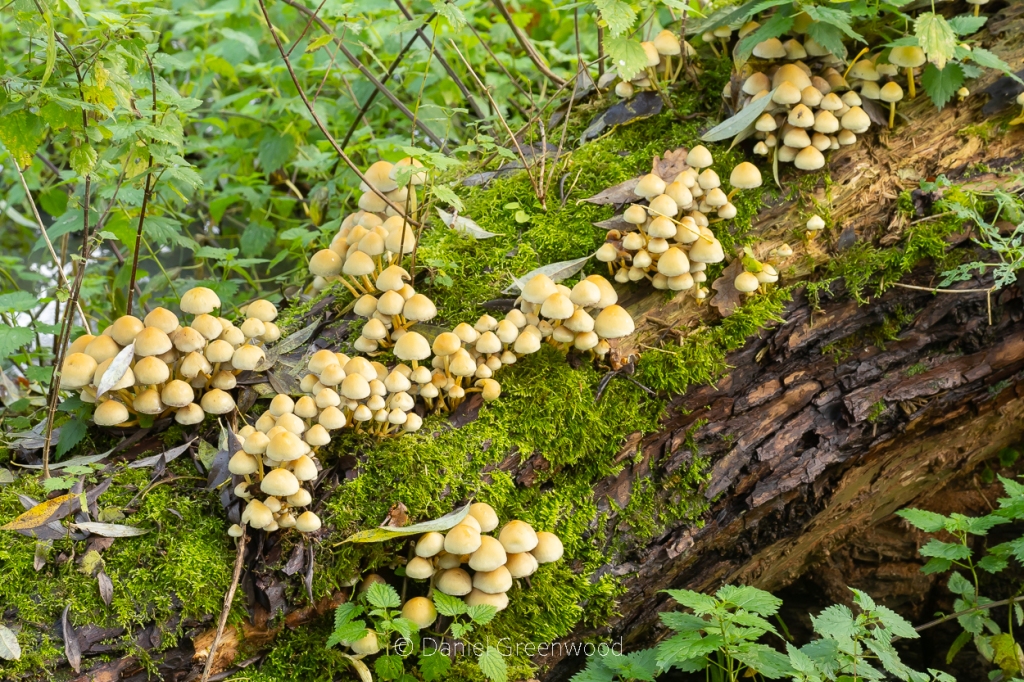Warnham, West Sussex, October 2023
A couple of hours in a wetland reserve in West Sussex that accrued so many photos it has taken me two months to process them! Therefore be prepared for a comprehensive post this week. The star of the show here is lumpy bracket, about halfway through the post.

It was a lovely day for it, at times.
Mushrooms


My assumption here was that this could be funeral bell, but iNaturalist suggests this could be common cone cap (Pholiotina rugosa). I think it looks good for it, but how helpful that is you never know.

At these wetter and colder times of the year it can be good to look at moss on trees for some of these ‘moss-shrooms’. I usually just consider these to be bonnets or similar, though I realise it’s more complicated than that.

Another nice little moss-shroom. I used my phone torch as a secondary light source here.

And again, not the greatest illustration but they are very small. I think you need a tripod for something so small. Phone torch deployed once again.




Another of the tiny shroomlets, my iNaturalist-influenced guess is Mycena pseudocorticola.



I’ve found redlead roundhead (Leratiomyces ceres) in the woodchip alongside the footpath here on several occasions. It seems to be an introduced species in the UK.


Sulphur tuft provides some of the shroomiest visual experiences of the autumn. This scene was one such experience. The is accessed by a boardwalk which means there are often unspoiled or untrampled areas of the woodland where mushrooms grow undisturbed. The water is very high at this time of year anyway.


Sheathed woodtuft does somewhat resemble sulphur tuft from afar, but it can also be confused for funeral bell. This was down in a little drainage channel. They do thrive in damp environments.

I don’t know what this is but it seems something like a bonnet.


I’ve seen these tiny white shroomlets called ‘fairy bonnets’ before but can’t find reference to them online. They are yet more moss-shrooms. I’ve seen these in the summer, not just autumn. They need wet and cool microclimates, usually on mossy trees.

There is a great spot for oysterlings at this location, as they grow on dead twigs that are at or above head height. So you can comfortably photograph the gills and capture some bokeh, too.
Polypores


I haven’t got an affirmative ID on these yet but I think all the images in this first section are lumpy bracket.






I had to share these because the guttation (droplets) are so weird.



I noticed that one of the droplets had a grub of some kind trapped(?) inside? I call this a larva lamp!

Blushing bracket is a common species in the Sussex Weald, here it is in its blushing phase.



This lovely spread of stereum appears to have no pores visible on the undersides, which could make it false turkey-tail, but I don’t think that’s right.


Bleeding oak crust is something I am only just coming to appreciate, another stereum.
Jellies

Purple jellydisc is a regular species on the bark of oak or beech trees.

Common jelly spot looks a lot like egg yolk, minus the egg-white.

I started this post thinking yellow stagshorn was a type of coral fungus, but it’s a jelly! It’s very common in Sussex on decaying wood, usually low to the ground.
Corals

I didn’t see a lot of coral fungi in 2023. This could be crested coral fungus.
Lichens

This lovely lichen was growing among the boardwalk. The threads and pattern on the thallus weren’t visible without using the macro lens.

You’re probably sick of fungi now. The End.
Thanks for reading.


Leave a comment